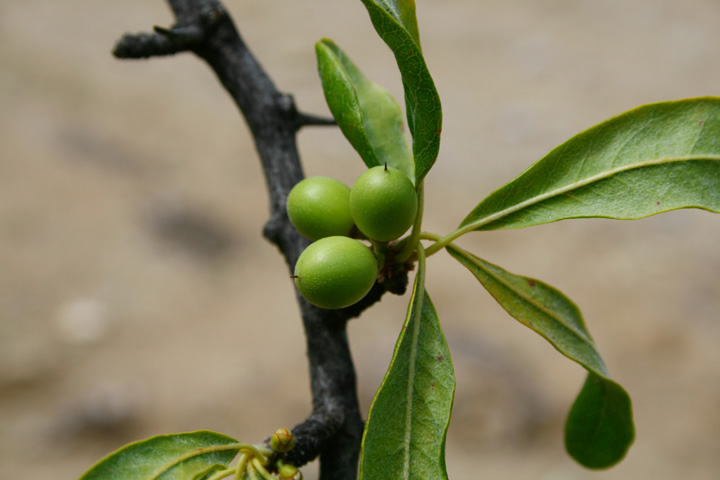
|
Sapotaceae |
|
|
Shrubs or trees, deciduous or evergreen, sap milky. Leaves alternate or whorled (fascicled) on short shoots, simple; stipules present or absent; petiole with decurrent, adaxial wing forming channel or groove; blade margins entire; venation pinnate. Inflorescences axillary, fasciculate or solitary flowers at leafy or defoliated nodes on older growth. Flowers bisexual [unisexual]; perianth and androecium hypogynous; sepals [2-]4-8[-11], distinct; petals 4-8[-9], connate proximally, lobes not divided or divided into 1 median and 2 lateral [abaxial] segments, corolla rotate, cyathiform, or tubular; nectary disc present; stamens 4-8[-12], antipetalous, epipetalous; anthers dehiscent by longitudinal slits; pistils 1, [1-]3-12[-30]-carpellate; ovary superior, [1-] 3-12[-15]-locular; placentation axile, basal, or basiventral; ovules anatropous or hemitropous, unitegmic, tenuinucellate; styles 1, terminal, exserted or included; stigmas 1, capitate or slightly lobed. Fruits baccate [capsular]. Seeds 1-10, brown to black, shiny, indurate; hilum prominent; embryo vertical, oblique, or horizontal; endosperm oily or absent. The monophyly of the Sapotaceae (including Sarcosperma) is supported by molecular phylogenetic studies (A. A. Anderberg and U. Swenson 2003; Swenson and Anderberg 2005). Three subfamilies were proposed by Swenson and Anderberg in contrast to the five tribes recognized by T. D. Pennington (1991, 2004, 2004b) and R. Govaerts et al. (2001). The Sapotaceae are characterized by the presence of latex, malpighian hairs, fasciculate inflorescences, and antipetalous stamens. The family is widespread throughout the tropics and has economically important species. Manilkara zapota provides chicle for chewing gum, and some species provide edible fruits, e.g., Chrysophyllum cainito (star-apple), Pouteria mammosa (mamey), and P. campechiana (canistel or egg-fruit). Mature fruits of our species of Sideroxylon are edible, and have not been exploited economically. Chrysophyllum oliviforme and Mimusops elengi are handsome trees and often planted as ornamentals.
PLANT: Trees or shrubs, usually with latex; hairs mostly T-shaped. LEAVES: simple, entire. FLOWERS: actinomorphic, hypogynous, normally small and perfect, the perianth mainly 5-merous; sepals distinct or nearly so, imbricate; corolla sympetalous, the lobes imbricate; stamens epipetalous, some often reduced to staminodia that alternate with the corolla lobes; anthers opening by longitudinal slits; pistil of 2-14(-30) united carpels, often hairy, multilocular; ovule 1 per carpel. FRUIT: a berry. SEEDS: large, the seed coat lustrous, usually thick and hard. NOTES: Ca. 70 genera, 1100 spp., widespread in the Old and New Worlds, mainly tropical. REFERENCES: Landrum Leslie R. 1992. Sapotaceae. Ariz.-Nev. Acad. Sci. 26(1)2. |
|
This project was made possible in part by the Institute of Museum and Library Services [MG-70-19-0057-19].
Powered by Symbiota


